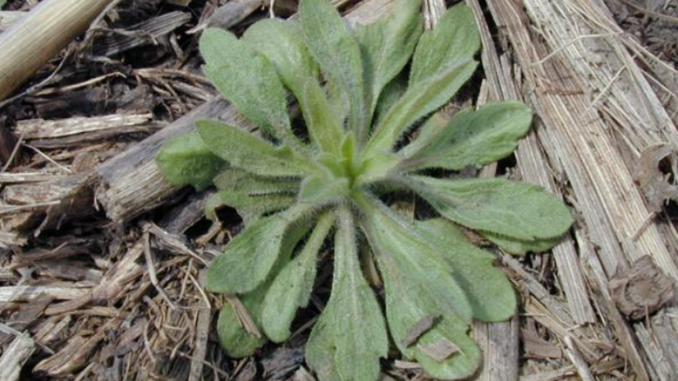Ag Informer – 2023 Tough for Weed Control?

Dry conditions crippled many farmers’ weed-control efforts in corn and soybeans this past season.
If that describes your situation, agronomists say plan now to address weeds and limit their impact on your 2023 crops.
Here is a handful of their recommendations
1. Consider whether you can use a burndown application yet this fall.
Winter annuals, such as horseweed (marestail), for instance, respond well to burndown treatments, notes Meaghan Anderson, Iowa State University (ISU) field agronomist.
2. Harness a high-quality adjuvant/surfactant.
This year, adjuvants and surfactants gained street cred with farmers trying to extend limited herbicide products over more acres and improve performance of active ingredients, says Mark Hockel, master agronomist for Eagle Ag Consulting, Windom, Minn.
3. Evaluate herbicide carryover from 2022 before implementing your control plan next spring.
Dry conditions can extend the life of a residual herbicide in soil, notes Gentry Sorenson, Iowa State University field agronomist.
“Soil moisture is one of many factors that influences degradation of a soil-applied herbicide,” he says. “When drought conditions occur, herbicides may not degrade as fast. Microbial activity may decrease with long periods of dry soil conditions.”
That could mean a problem for future crops. Hockel says that has been the case for some of his customers.
“We’ve had more corn herbicide carryover in beans, alfalfa and edible crops the past several years, so some farmers have shifted to other herbicides for that reason, to minimize the potential impact,” he explains.
4. Consider how to work around Mother Nature.
Consider that preemergence products commonly need ½” of rain for activation or good soil moisture if incorporated, notes Cody Creech. He tells farmers to apply pre products ahead of a rain but no more than a week to 10 days before planting.
If conditions allow, apply postemergence products after a rain, when weeds are still small but putting on new growth.
5. Look at weed-control options beyond herbicide use.
The advice you got for 2022 is still in effect for next season: have a backup plan to your backup plan for herbicide products in 2023.




